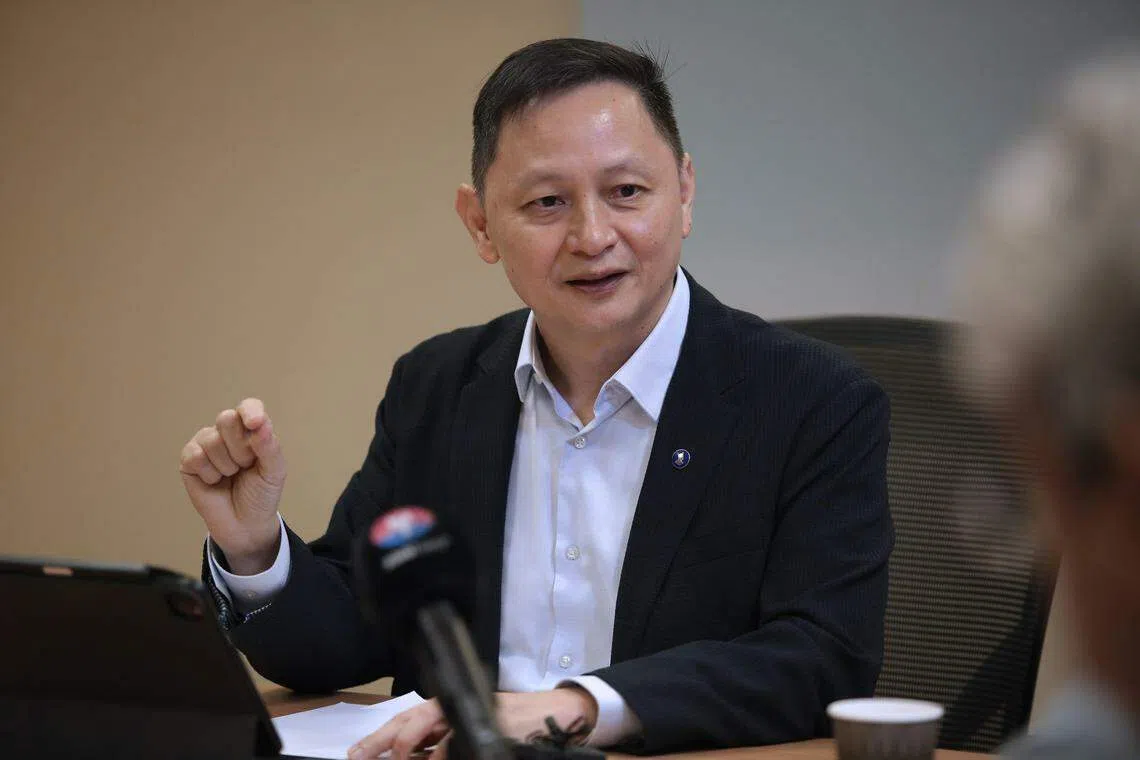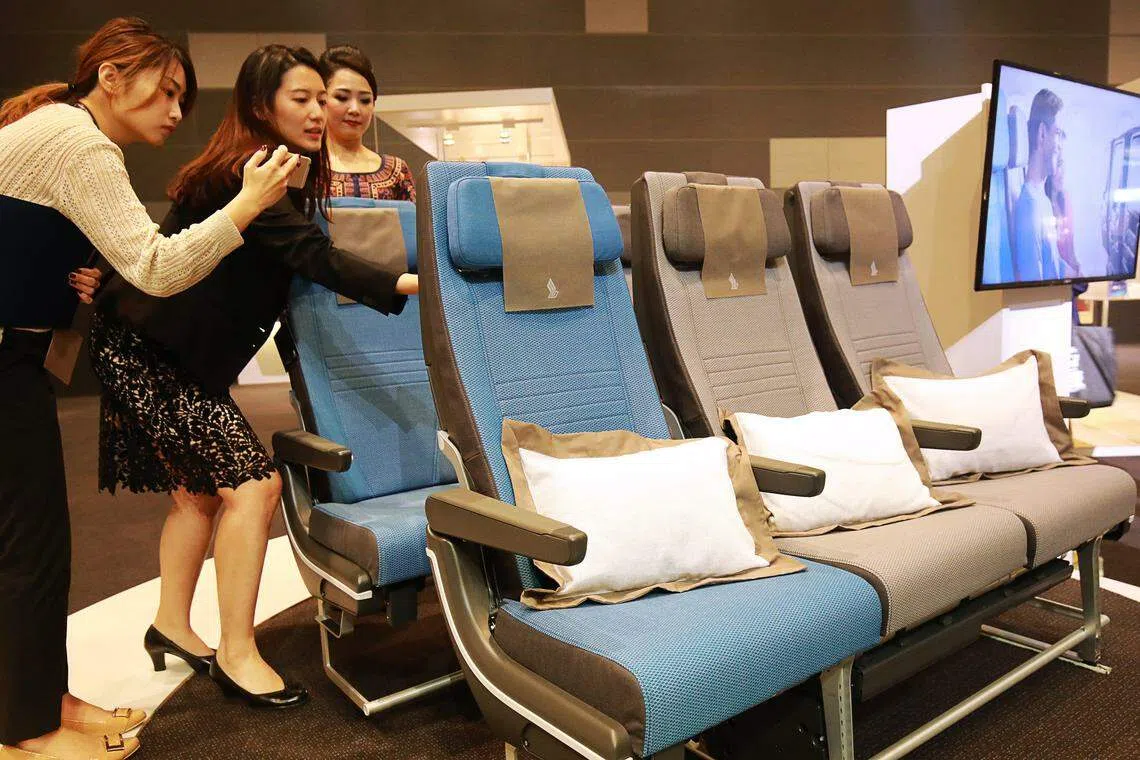SIA aiming to maintain its industry lead as first-mover advantage diminishes

Tay Peck Gek
NATIONAL carrier Singapore Airlines (SIA) understands that its first-mover advantage in ramping up capacity post-pandemic would eventually diminish, and it has been working on maintaining its industry leadership.
SIA chief executive Goh Choon Phong said that the airline group is “significantly ahead” of Asia-based carriers in terms of passenger capacity recovery, when asked at a media roundtable on Wednesday (Nov 8) about its lead over its closest competitor.
But he also understands that this first-mover advantage will diminish over time as other carriers add back their passenger capacity.
Indeed, the lead in capacity that the airline group, including its budget arm Scoot, has over members of the Association of Asia Pacific Airlines collectively has narrowed from 40 percentage points in April 2022 to 11 percentage points in September this year.
The SIA group would be operating at 92 per cent of pre-pandemic levels by December, and is projected to achieve full recovery by March 2025.

SIA’s prompt increase in passenger capacity has allowed it to capture pent-up demand when borders reopened. In contrast, other airlines struggled to add flights due to insufficient manpower and planes, which they had let go to stay afloat when the pandemic was raging.
The 60-year-old helmsman stressed that SIA wants to retain its industry leadership as it strives to emerge stronger from the pandemic, which struck the global commercial aviation in early 2020.
Thus, SIA is focusing on three aspects to strengthen its foundation for the future: service excellence, network connectivity and product leadership. The airline is counting on, for example, the new generation Boeing 777-9 for its edge over its peers, as the widebody aircraft would be fitted with “industry-leading” seats and cabin products.
The Boeing 777-9 delivery has been delayed due to supply chain issues, which are faced by airlines around the world. Recently, another issue has cropped up for the industry: Pratt & Whitney geared turbofan (GTF) engines have manufacturing flaws that could ground hundreds of Airbus planes.
SEE ALSO
Scoot has four GTF engines being affected, but its chief executive Leslie Thng, who was also at the roundtable, said it is still early to talk about the number of planes to be grounded and the impact on the budget airline.
He pointed out that Scoot has flexibility in terms of extending aircraft leases with lessors, and it is also scheduled to take delivery of new planes.
“I think what is equally important is that the whole SIA group believes in building resilience. So at Scoot level, we also invest in spare engines. Now (the) spare engines (do) help to manage some of these unexpected events.”
Goh added that SIA is in a better position than its peers to deal with the engine issues, because it has its own aircraft maintenance, repair and overhaul (MRO) subsidiary.
“We’re in a better position because of our own engineering company SIA Engineering . And that’s the reason why you see that over the years… SIA Engineering has been entering into JVs ( joint ventures) with just about all the engine manufacturers, which means that we have onshore ability to repair those engines. And you can imagine… why that could be an advantage.”

Meanwhile, the Middle East conflicts are also on the radar of SIA as oil prices might surge to historical high levels. But Goh reiterated that hedging is used as an instrument to smooth out the price volatility of jet fuel, and not to speculate on oil price directions.
SIA has hedged 36 per cent of its projected fuel consumption between October 2023 and March 2024, and around 10 per cent for the period between April 2024 and June 2025.
Furthermore, the airline group has made contingency plans for route diversions should there be a need arising from the ongoing Israel-Hamas war in the Gulf region.
As for the China market which has yet to recover fully, the SIA chief is confident that demand will rebound, just like other regions whose borders reopened earlier than the North Asian country. He said an increase in bookings was observed after Singaporeans were allowed to travel visa-free again to China.
The travel fair, which SIA and Scoot have organised to offer over 370,000 discounted tickets, has also attracted “overwhelming attendance”, including bookings to China, he said.
The group will serve 23 destinations in China by December, compared with 25 destinations before the pandemic.
When asked if staff would continue to receive a bumper bonus this financial year, Goh pointed out that this aspect of the remuneration is determined by a formula agreed with the labour union. The formula is largely based on the performance of SIA.
While the airline group recently posted its highest-ever half-year earnings of S$1.4 billion (up 55.4 per cent), Goh pointed out that the airline industry’s profits are subject to volatility.
Decoding Asia newsletter: your guide to navigating Asia in a new global order. Sign up here to get Decoding Asia newsletter. Delivered to your inbox. Free.
Copyright SPH Media. All rights reserved.








